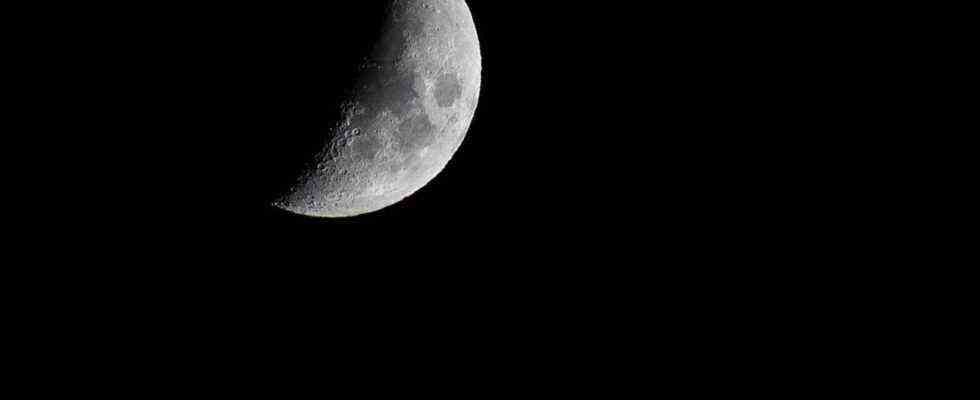Updated 11/11/2021, 5:06 PM
- The earth not only has the moon as a companion.
- Smaller boulders, such as the object called Kamo’oalewa, move around the sun in their vicinity.
- Researchers now have a theory about their origins.
A celestial body that is just 45 to 60 meters tall and is constantly near the earth could be a piece of debris from the moon – ejected into space when an asteroid impacted. This is the conclusion reached by an American research team that has observed the so-called quasi-satellite for several years.
In particular, the color of the object shows no resemblance to asteroids, but to lunar rocks brought to earth by Apollo astronauts, the scientists explain in the journal “Communications Earth & Environment”.
Five smaller objects are constantly near the earth
Since 2004, astronomers have discovered a total of five small celestial bodies that are constantly near the earth, but independently orbit the sun. Astronomers refer to such celestial bodies as quasi-satellites. Observed from Earth, their orbit looks as if they were circling our planet – against the usual direction of movement.
“Little is known about these quasi-satellites so far,” write the scientists working with Benjamin Sharkey from the Lunar and Planetary Laboratory in Tucson, Arizona, “because they are extremely weak and difficult to observe.”
For several years, the team took a closer look at the quasi-satellite Kamo’oalewa, discovered in 2016 – the name comes from a Hawaiian creation myth and means “descendant traveling alone” – with the Large Binocular Telescope in Hawaii. A difficult undertaking, as the small celestial body can only be observed for a short time in April due to its orbit.
To their surprise, Sharkey and his colleagues found that Kamo’oalewa’s spectrum is unlike any other known asteroid in near-Earth orbits. The researchers only found a match in a comparison with silicate rock from the moon. In addition, a precise analysis of the orbit of Kamo’oalewa also suggests that the small chunk originally came from the Earth-Moon system. “The orbit is atypical for near-earth asteroids,” explains Sharkey’s colleague Renu Malhotra, “and it is very unlikely that a normal near-earth asteroid will enter such an orbit.”
Kamo’oalewa could be a hurled debris from the moon
The researchers therefore believe that the most likely explanation is that Kamo’oalewa – and perhaps the other quasi-satellites as well – is a piece of debris that was thrown out by an asteroid impact on the moon. Another evidence supports this hypothesis: near the earth, Kamo’oalewa only moves at two to five kilometers per second – asteroids on orbits near the earth usually move past our planet at around 20 kilometers per hour.
However, the researchers cannot say when the impact that could have formed Kamo’oalewa took place – only that the object could probably be stably near the earth for many millions of years, but not for billions of years. (dpa / Rainer Kayser / mgb)

